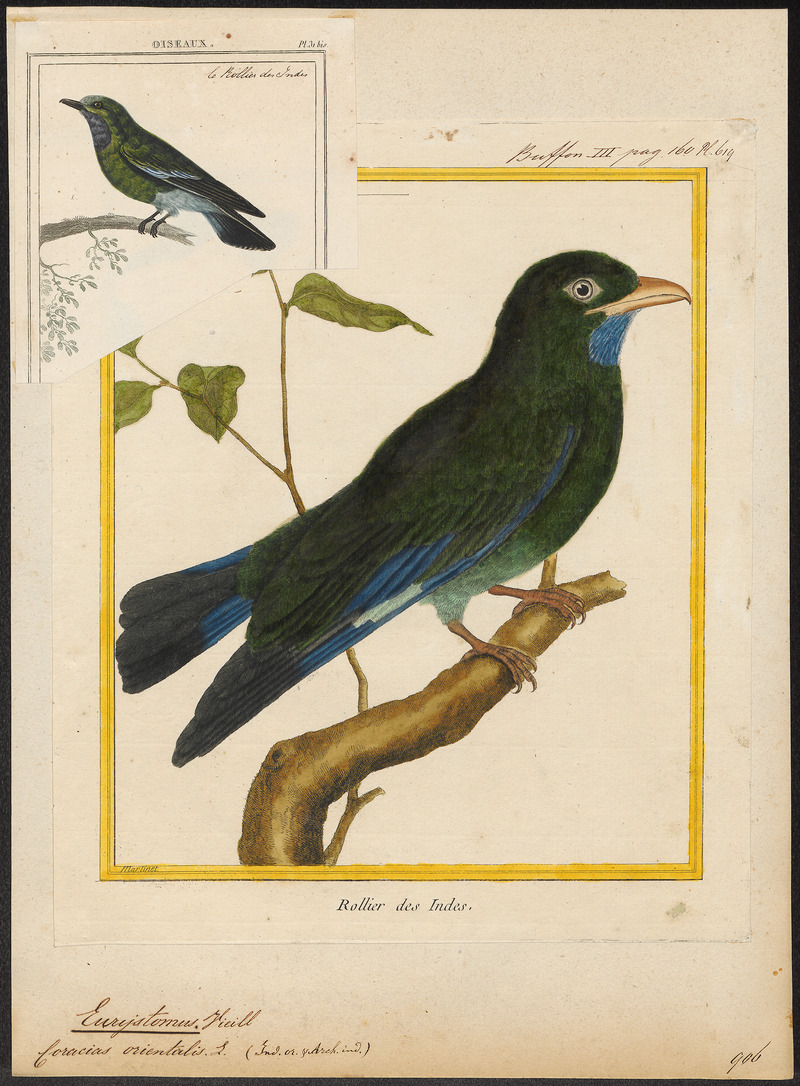|
| Query: Common blue | Result: 630th of 981 | |
Oriental dollarbird, dollar roller (Eurystomus orientalis)
| Subject: | Oriental dollarbird, dollar roller (Eurystomus orientalis)
| | Poster: | Wiki Photos (---@---.---)
| |

| Resolution: 2902x3941
File Size: 6118078 Bytes
Upload Date: 2017:03:03 03:33:42
|
ERROR : Server Busy(-1105)
ERROR : Server Busy(-1105)
Oriental dollarbird, dollar roller (Eurystomus orientalis)
Artist
François-Nicolas Martinet (1739–1797) Link back to Creator infobox template wikidata:Q3083602
Description
Eurystomus orientalis
Date 1700-1880
Source/Photographer Buffon III p. 160 pl. 619
Old Latin name Eurystomus orientalis
New Latin name Eurystomus orientalis
Common name Nederlands: Dollarvogel
Source: https://commons.wikimedia.org/wiki/File:Eurystomus_orientalis_-_1700-1880_-_Print_-_Iconographia_Zoologica_-_Special_Collections_University_of_Amsterdam_-_UBA01_IZ16700243.tif
The dollarbird (Eurystomus orientalis), also known as the Oriental dollarbird or dollar roller, is a bird of the roller family, so named because of the distinctive blue coin-shaped spots on its wings. It can be found in south-west Pacific and east Asia from northern Australia to the Japan archipelago and India. |
^o^
Animal Pictures Archive for smart phones
^o^
|
|